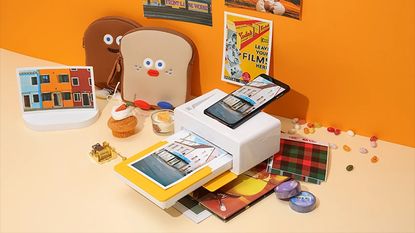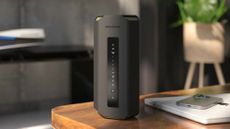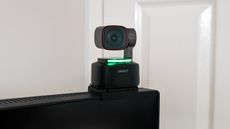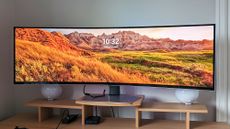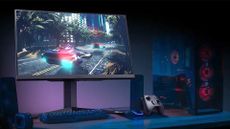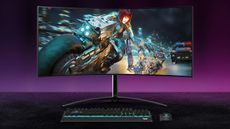Let's say you're in the market for the best photo printer you can buy: if you are, then the Kodak PD460 (or the Kodak PD460 Dock Plus Instant photo printer, to give it its full name) has to be somewhere on your shortlist.
There's a lot to talk about when it comes to this printer, more than you might expect considering its straightforward looks and easy operation. On one level, it is a very simple device to get your head around – but you also want to make sure you know absolutely everything about this device if you're thinking of purchasing it... and that's where this comprehensive guide comes in.
Below, we'll take you through all of the specs, features and quirks of the Kodak PD460 that you need to know about before buying. Meanwhile, if you're looking for even more hardware for your desk, check out our best printers and best printers for students guides.
Should I buy the Kodak PD460 photo printer?
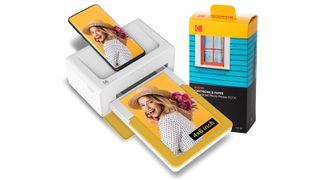
If it's a photo printer you're after, then this is one of the best in the business at the moment: it produces physical copies of the digital pictures stored on your phone, so you can put them in a frame on your desk, or stick them to the wall, or even put them in an old-fashioned photo album if you remember what one of those is.
This is not the printer to buy if you're wanting to produce your own newsletter or create posters to put up around the neighbourhood, because it's just not big enough to fit the size of paper that you're going to need. It's specifically for photo prints, which means a particular type of ink and a particular type of paper.
When it comes to comparing it against other photo printers on the market, this is a bit more expensive than most of the alternatives, and it's not battery powered – so it needs a mains supply. However, it does print bigger photos than most of its competitors.
What are the specs of the Kodak PD460 photo printer?

Let's start with the dimensions of the Kodak PD640 photo printer: this device measures 24.5 cm x 21.7 cm x 16.4 cm (9.65 inches x 8.54 inches x 6.46 inches), and weighs in at 2 kg (4.4 pounds). As we've said, it's not the most portable of photo printers, so this is more suitable for sitting on your desk rather than carrying in your pocket.
From those dimensions it can produce 4 inch x 6 inch physical photo prints, which is the 'traditional' size that used to be the norm when we were all getting our films developed. That's a decent size to show off portraits, group shots and landscapes, though you're still going to have to go to a dedicated shop for your canvas prints.
Kodak doesn't go into detail about how fast the printing actually is, but from the videos we've seen, it's fairly rapid – you're only going to be waiting a few seconds from the start of printing to the end. Connecting up a smartphone is a quick and simple process too.
What are the best features of the Kodak PD460 photo printer?
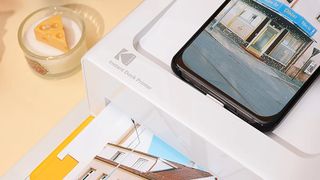
Speaking of connecting a smartphone, there's actually a physical connector on this dock – USB-C for Android phones and Lightning for iPhones. That's not too common for dedicated photo printers and might be a reason to pick up this particular model. If you don't want to use a physical connection for whatever reason, Bluetooth is available too.
In terms of actual features, there's not too much to talk about: the Kodak PD460 produces great 4 inch x 6 inch prints that look great and will last you a long time, and you don't need to know a whole lot more than that.
It's worth pointing out that the printer supports images in both portrait and landscape mode too, and the smartphone app that takes care of file transfers is available for both Android and iOS. Whatever your model of smartphone, you're going to be able to output images to this particular photo printer.
What else do I need to know about the Kodak PD460 photo printer?
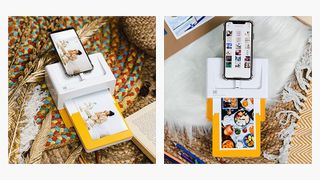
On the topic of the accompanying smartphone app, the one that Kodak makes is better than most. It lets you add filters and frames with the minimum of fuss, so if your images of choice need a bit of enhancing then the app can take care of it.
Like other photo printers, you need special photo paper and special ink cartridges direct from Kodak, but these aren't hard to get (just make sure you factor them into your budget). Depending on where you buy the photo printer from, you should find that there's a photo paper pack or two included in the bundle.
The photos that you print don't have to be photos of your holiday or your pets, by the way. You can just as easily use the Kodak PD460 at the office to create mood boards or presentations – there are all kinds of different scenarios where you might need physical photo prints.
What are the alternatives to the Kodak PD460 photo printer?

If you take a look at our list of the best photo printers available at the moment, you'll see there are lots of top quality alternatives to the Kodak PD460. Quite a lot of the other alternatives are portable printers that produce smaller photos: they're battery powered and easier to carry around.
There's the HP Sprocket Select, for example, which produces photo prints that measure 2.3 inches x 3.4 inches and connects to your phone via Bluetooth. If you're looking for something reliable you can take anywhere, it's worth a look.
The Fujifilm Instax Mini Link is another option to consider: it's even smaller in size and produces prints that are only 1.8 inches by 2.4 inches, but it's still a fantastic way of preserving your memories by getting them off your phone. As always, be sure to check the latest prices on the web before reaching a final decision.
- We've ranked all the best laptops for you
